I Dig Sports
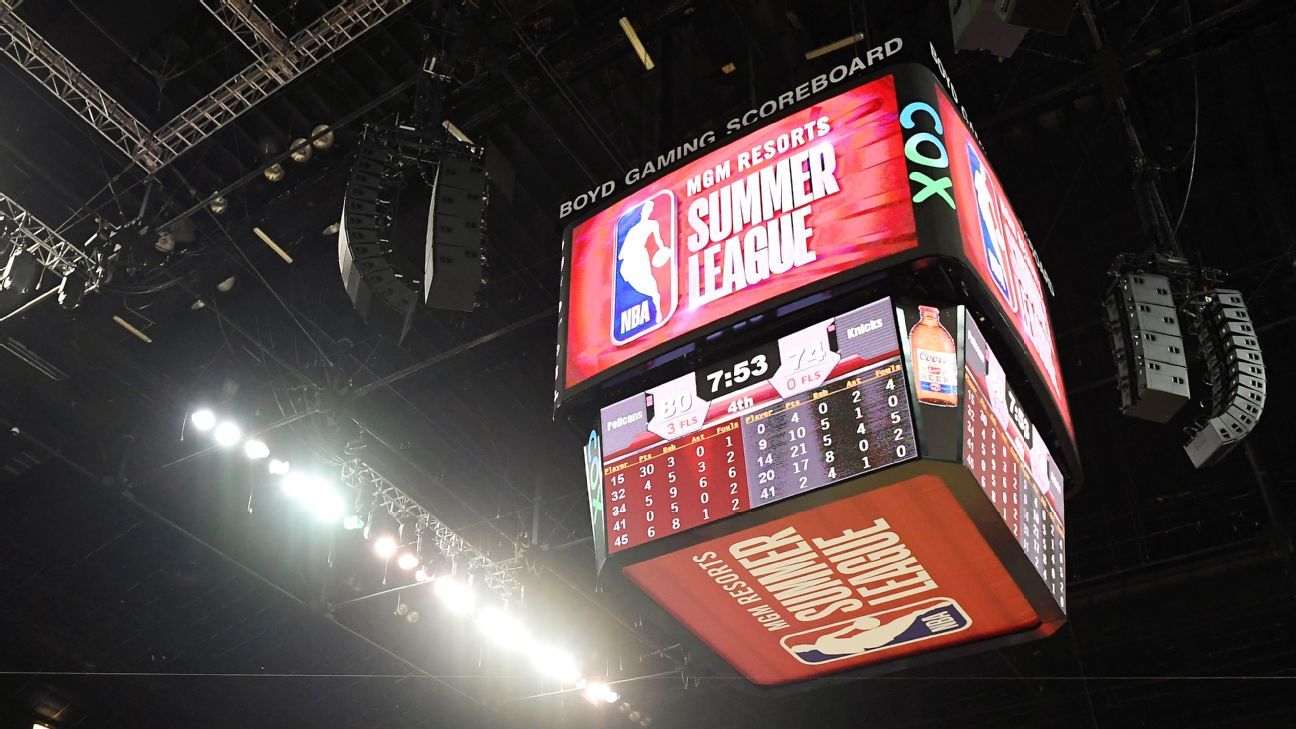
The NBA Las Vegas Summer League will resume as scheduled Saturday after league officials said structural engineers determined Thomas & Mack Center and Cox Pavillion are "safe to open" after an earthquake Friday night.
There are 10 games that will be played Saturday at the two adjoining sites, beginning with the Oklahoma City Thunder taking on the Utah Jazz at 3 p.m. ET.
Play was stopped in Las Vegas on Friday night after a 7.1 magnitude earthquake hit Southern California at 8:19 p.m. PT -- during the fourth quarter of the New Orleans Pelicans-New York Knicks game inside the Thomas & Mack Center.
The overhead scoreboard was swaying, and officials elected to stop the game and have the teams leave the floor while gauging if it was safe to continue. After about a 15-minute delay, the decision was made to suspend the game with the Pelicans leading 80-74.
The NBA announced later Friday that the game would not be resumed.
A game between the Orlando Magic and San Antonio Spurs inside the smaller Cox Pavilion, which is attached to the Thomas & Mack Center, initially continued without delay because that gym lacks an overhead scoreboard. The league ultimately decided to cancel that game after the third period for "precautionary reasons."
The league also canceled the Phoenix Suns and Denver Nuggets game, which was to have been played at the Thomas & Mack Center after the Knicks-Pelicans.
Friday night's quake was centered 11 miles from Ridgecrest, California, a Mojave Desert town about 150 miles northeast from Los Angeles. The same area was jolted by a 6.4 quake one day earlier.
ESPN's Nick Friedell contributed to this report.
Tagged under
Vegas shifts odds in Clippers' favor to win title
Published in
Basketball
Saturday, 06 July 2019 09:52
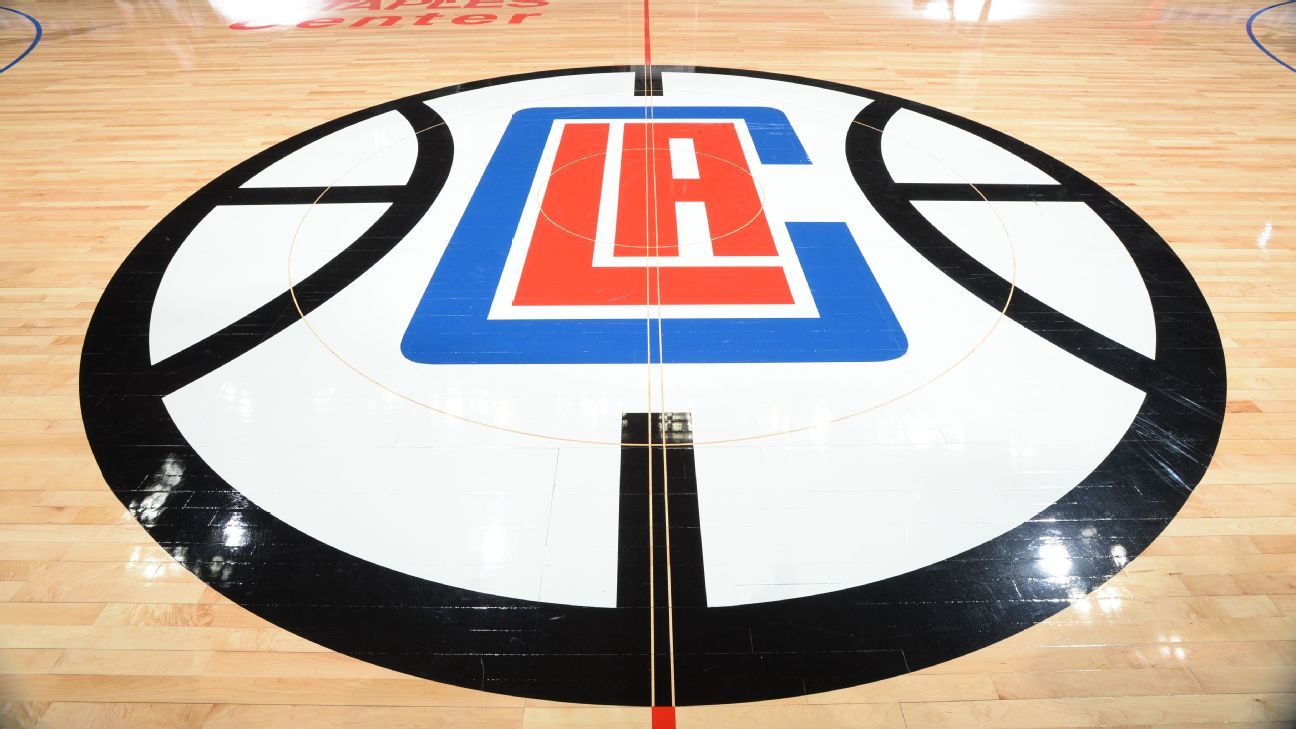
The LA Clippers, potentially for the first time in franchise history, are the favorite to win the NBA title.
With the acquisitions of Kawhi Leonard and Paul George, Caesars Sportsbook on Saturday morning moved the Clippers from 10-1 to 11-4 to win the 2019-20 NBA title, just ahead of the rival Los Angeles Lakers.
The Lakers, who were in the running to sign Leonard, had been the consensus 2020 title favorite since acquiring Anthony Davis to play alongside LeBron James. With Leonard off the table, the Lakers dropped from 7-5 to 4-1 at the Caesars Sportsbook.
The Milwaukee Bucks, at 4-1, have the best odds in the Eastern Conference, followed by the Philadelphia 76ers at 7-1.
The Golden State Warriors are 10-1, followed by the Utah Jazz at 14-1. The Houston Rockets are 15-1, and the Brooklyn Nets are 20-1.
The defending champion Toronto Raptors, with the loss of Leonard, dropped from 10-1 to 50-1. After losing George, the Oklahoma City Thunder saw their odds drop to 100-1.
Odds varied from book to book. Bookmaker William Hill U.S. kept the Lakers as the favorite at 3-1, with the Clippers at 7-2. The Westgate Las Vegas SuperBook had the Clippers as a 3-1 favorite and lengthened the Lakers' odds to 6-1, behind the Bucks at 4-1.
Over the past several weeks, big bets have come in on the Lakers at sportsbooks around Las Vegas. The SuperBook reported taking a $10,000 wager on the Lakers to win the title at 5-1 on June 15 and another $10,000 bet at 7-4 on July 1. William Hill U.S. reported taking a $9,500 wager on the Lakers at 5-1 on June 17 and a $10,000 bet on the Lakers on June 28.
As of Wednesday afternoon, 47% of the money that had been wagered on William Hill's odds to win the 2020 NBA championship was on the Lakers. At Caesars, nearly five times as much money had been bet on the Lakers than had been wagered on any other team.
For now, though, the Clippers are the favorite at the majority of sportsbooks. According to sports-betting archive Sportsoddshistory.com, it's the first time they have been the title favorite since the franchise moved to Los Angeles in 1984.
As news of the Clippers' moves happened, sportsbooks around Las Vegas took 2020 title odds off the board and reposted them later Saturday morning. New Jersey sportsbooks DraftKings, FanDuel and PointsBet each had the Clippers as the favorite after the deal.
In previous years, a flurry of bets, including some large wagers, had shown up at Las Vegas sportsbooks ahead of James' move to the Cleveland Cavaliers in 2014 and Kevin Durant's decision to join the Warriors in 2016. That didn't happen last week with the Clippers.
Jeff Sherman, vice president of risk for Westgate, was surprised at the lack of betting interest on the Clippers and said he wrote just one bet on them last week.
No notable title bets on the Clippers were placed Friday at either Caesars or Westgate, sportsbook representatives told ESPN. Seven teams had attracted more bets than the Clippers prior to the news at William Hill U.S., including the New Orleans Pelicans.
Tagged under
Sources: Fear of Lakers dynasty drove Clips' deal
Published in
Basketball
Saturday, 06 July 2019 06:56

As fears mounted that the Los Angeles Lakers had pushed to the cusp of creating an unprecedented Big Three, the LA Clippers made a blockbuster trade for Oklahoma City's Paul George -- and cleared the path for free-agent Kawhi Leonard to sign a four-year, $141 million contract with the Clippers, league sources told ESPN.
The Clippers became the last line of defense for the balance of power in the NBA -- never mind the franchise's own future. The Clippers had come to believe that, without a deal for George, Leonard was prepared to sign with the Lakers and create a Staples Center partnership with LeBron James and Anthony Davis, sources said.
Had Leonard joined the Lakers, they would have been overwhelming title favorites, and it perhaps would have thrust the Clippers back into the franchise's dark ages. Now the Clippers are in Western Conference contention, shoulder-to-shoulder with the Lakers -- as well as the Denver Nuggets, Houston Rockets, Portland Trail Blazers and Utah Jazz.
George and Leonard wanted to play together, and George and his agent, CAA's Aaron Mintz, approached Thunder general manager Sam Presti in recent days and requested a trade, league sources said. Leonard's message to Clippers owner Steve Ballmer and president of basketball operations Lawrence Frank was essentially this: Get George, and you'll get me.
Before free agency started, the Clippers knew they needed a second star to lure Leonard but had no idea whom he wanted. The Clippers inquired on deals for Washington's Bradley Beal and New Orleans' Jrue Holiday, but those guards weren't available in trades. Eventually, Leonard made his intentions known to the Clippers: Paul George.
To Leonard, the cost was immaterial. He wanted to walk into a championship contender and believed George represented the co-star he needed to combat James and Davis, sources said. Leonard wanted to play for Doc Rivers, a coach with whom he could feel a kinship he felt was similar to his relationship with Toronto Raptors president Masai Ujiri, sources said.
In the end, Presti made the best of an impossible situation: Despite two years left on George's deal, he didn't want a trade demand hanging over his franchise. Still, he'd never have more leverage to trade George than he did late Friday night, when there were no limits to the Clippers' desperation to land George and Leonard in one dramatic swoop.
In a wild night of negotiations, Presti leveraged the Clippers and Raptors off each other, preying on the uncertainties of what the other might be willing to give Oklahoma City for the chance to secure Leonard and George -- and perhaps the inside track on a championship.
Clippers leadership -- Ballmer, Frank and general manager Michael Winger -- harbored fears that Presti was close to striking a deal with Toronto that would have delivered George to the NBA champions, sources said.
Had Presti been able to strike a deal for George with the Raptors -- and Leonard was willing to stay -- George was believed to be willing to join the Raptors too, sources said. Presti had been willing to pursue a package of Russell Westbrook and George to the Raptors, but no talks ever gained traction, sources said. Ujiri and Raptors GM Bobby Webster had no ability, nor inclination, to counter the Clippers' offer with a multitude of first-round picks into the middle of next decade, league sources said.
The Raptors could have been looking at adding Westbrook, with four years and $171 million left on his deal, and George to a team that Leonard still might have parted ways with. Toronto extended itself as far as it could for Leonard, but Ujiri could never be sure that the Thunder even wanted to do a deal with them -- and perhaps were just using the Raptors to squeeze more out of the Clippers.
1:48
How the Lakers can build their roster after missing on Kawhi
Bobby Marks analyzes the Lakers' addition of Danny Green after losing out on Kawhi Leonard and looks at other free agents they could add to their roster.
Ujiri had delivered Leonard everything he wanted in a franchise: leadership, trust, championship talent and a medical partnership that preserved and prepared his body. What Ujiri couldn't give Leonard was out of his control: geography, weather and a chance to return to his Southern California roots.
In the end, the Clippers' reservoir of draft picks and young players -- cultivated in the Blake Griffin trade and built on in the flipping of Tobias Harris to Philadelphia -- gave the Thunder a return that the Raptors couldn't match in trade talks, league sources said.
Toronto's pressure was unmistakable: Allow George to get traded to the Clippers and risk Leonard walking into Staples Center arm-and-arm with George to take on James and Davis. This was a high-stakes game playing out across the league Friday night, with the future balance of power hanging.
From the time that Leonard demanded his trade in San Antonio in 2018, the Clippers believed that they had to get him. Here was a top-five player with Southern California roots whose personality maybe didn't fit with the bright lights and scrutiny that comes with life as a Laker. The Clippers withstood several significant obstacles on the way to a free-agent commitment, including Leonard's title with the Raptors and the Lakers' acquisition of Davis.
When it was time to make a decision on sacrificing the franchise's long-term future with a historic haul of draft picks, Ballmer felt he had no choice. Leonard wanted George, and the Clippers paid an unprecedented price in assets. In the minds of the Clippers' decision makers, they were delivering a massive return of assets to Oklahoma City for George and Leonard. Without George, they were losing Leonard to the Lakers, sources said.
Now Staples Center is the NBA's epicenter, and the Clippers can walk Leonard and George into downtown Los Angeles to stand shoulder to shoulder with James and Davis. The wildest story on the wildest night of free agency.
Tagged under
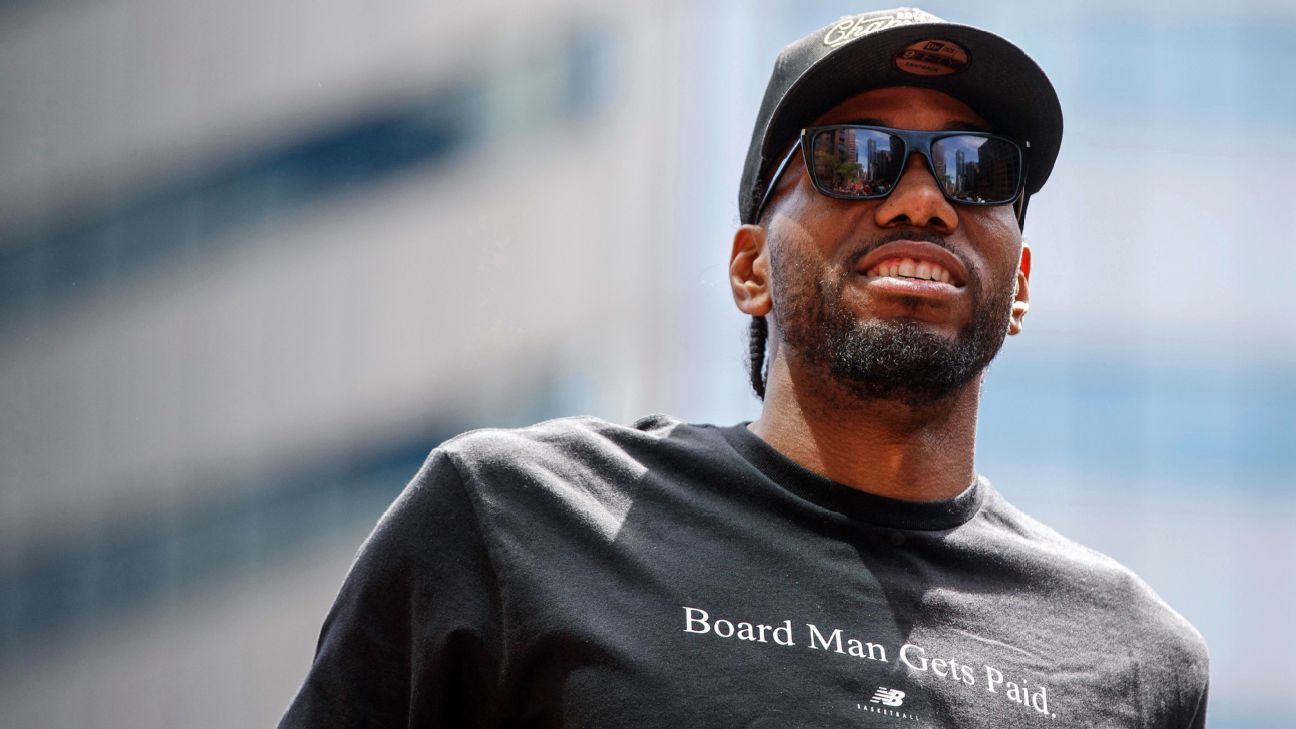
The first sign that Kawhi Leonard has a whole lot more to say than anyone ever imagined came a few days before NBA free agency officially opened.
Kevin Durant was getting ready to commit to the Brooklyn Nets, along with his good friends Kyrie Irving and DeAndre Jordan. They'd all grown close in 2016 with the United States Olympic Team and had talked often about playing with one another someday. All that remained was for free agency to officially open on the evening of June 30.
Then Durant got a call from Kawhi Leonard, asking if he'd consider teaming up with him and signing with the LA Clippers. They'd be great complements to each other, Leonard told Durant. He'd always admired him and had tremendous respect for him as a competitor.
Durant was flattered and more than a little stunned, according to sources close to the situation. He didn't know Leonard that well, so getting a recruiting call like that made a real impression.
And while Durant followed through on his plan to play with Irving and Jordan in Brooklyn a few days later, the seeds of Friday's blockbuster night had been sown -- which saw the Clippers secure a commitment from Leonard and trade for Oklahoma City forward Paul George.
Leonard's ambition in trying to recruit Durant to the Clippers suggested he was serious about joining LA in free agency. But it also suggested that they needed to get him another star.
After the Clippers met with Leonard for approximately three hours at head coach Doc Rivers' house in Malibu on Monday night, both sides went to work to make that happen. At the same time he was meeting with the Los Angeles Lakers and Toronto Raptors this week, Leonard was meeting, calling and texting with George, trying to convince him to find a way out of Oklahoma City.
Like Durant, George was flattered by Leonard's recruiting. The two had a fair amount in common. They'd grown up in the Los Angeles area at about the same time. George, 29, is from Palmdale, a dusty desert town about an hour and a half north of L.A. Leonard, 28, is from Riverside, a sprawling Inland Empire town about an hour and a half east of L.A. Both had been lightly recruited out of high school, found their footing as players at mid-major colleges (George at Fresno State, Leonard at San Diego State) and then quietly entered the NBA as mid-first-round picks.
Still, Leonard's recruiting efforts caught George by surprise.
Said one source close to George, "For a quiet guy, he's a hell of a recruiter."
For George to join Leonard with the Clippers, however, he'd have to ask for a trade from Oklahoma City -- and that wasn't going to be pleasant, considering the way the franchise had treated him in the two seasons he'd played there and the bonds that he'd formed.
But George felt like it was a once-in-a-lifetime opportunity, to play at home in L.A. alongside a generational talent like Leonard. So in the middle of the week, he went to Oklahoma City general manager Sam Presti and asked for a trade -- to the Clippers.
Presti was crestfallen. Just a year ago he'd been rewarded for taking a risk and trading for George when he eschewed all other free-agent meetings and agreed to a four-year contract to remain in Oklahoma City. It was a validation of everything Presti had built and believed in. And while this felt like a repudiation of that, Presti understood.
Superstar players in the modern NBA have tremendous power. Contracts don't really matter. Leonard forced his way out of San Antonio with a year remaining on his deal. Anthony Davis forced his way out of New Orleans with a year and a half left. George forced his way out of Indiana with a year left. Jimmy Butler forced his way out of Minnesota with a year left. Kyrie Irving forced his way out of Cleveland with two years left.
You don't have to trade a player once he asks to be moved. But usually you end up wishing you did, as the unhappy superstar and corresponding chaos these situations create thwart any chance at team building. So the Thunder obliged George's request and sought to extract maximum value from the Clippers, knowing that landing George was key to the Clippers' hopes of also landing Leonard.
While Leonard and his camp met with the Lakers and the Raptors, the Clippers and Thunder began negotiating a blockbuster trade. For Presti, it was a chance to make something good out of a bad situation while he still had leverage. For the Clippers, it was a chance to do something risky and bold after two seasons of prudent team building and asset accumulation.
Over the Fourth of July holiday, while anxious Raptors and Lakers fans tracked the flight plans of private jets carrying Leonard to and from California to Toronto, Presti was negotiating with his former protégé, Clippers general manager Michael Winger.
Leonard's camp was essentially trying to buy time, asking the Lakers as late as 9 p.m. PT on Friday night to delay the consummation of the Anthony Davis trade until "as late as Sunday," according to sources close to the situation. No reason was given for that delay by Leonard's camp, except that they should do it if they still wanted Leonard to consider them.
1:23
Nichols: Clippers basically traded for 2 superstars
Rachel Nichols outlines the trade the LA Clippers did to get Paul George and how that basically also landed them Kawhi Leonard.
By that point, the Lakers, Clippers and Raptors were committed to waiting and doing whatever they had to do to land Leonard. But with the NBA's moratorium lifting on Saturday, any further delays were going to start causing problems for the series of trades maintaining the Lakers' cap space.
The chance to contend for a championship creates a gravitational force in moments like these. Two years earlier, Presti had felt that same pull, when he traded for George as part of an effort to keep Russell Westbrook and rebuild after losing Kevin Durant to free agency. Last year, Raptors general manager Masai Ujiri had felt it, as he weighed whether to give a core group that had experienced countless playoff disappointments one more crack at it with Leonard as a leading man. The Lakers had felt it just a few weeks earlier, when their chance to pair LeBron James with Davis was finally upon them. Now it was the Clippers' turn. Was it time to eschew caution and trade away virtually every asset they had for George -- and the chance to close on Leonard? How would they feel if they didn't take the shot and Leonard chose the Lakers instead?
Leonard has become something of a Rorschach test the past couple of seasons. What you see in him is as much a reflection of who you are, as it is of him. He reveals little about himself, but everything about those who project on to him.
The Lakers saw a chance to build a dynasty around Leonard, Davis and James.
The Raptors saw a king, one they hoped would want to defend the championship ring he won in his lone season with them.
The Clippers saw a chance to reshape themselves and their place in the NBA.
In the end, though, this was about what Leonard wanted. His choice was more revealing of his character and ambitions than anything he could ever say.
He went home. And he didn't go alone.
Tagged under
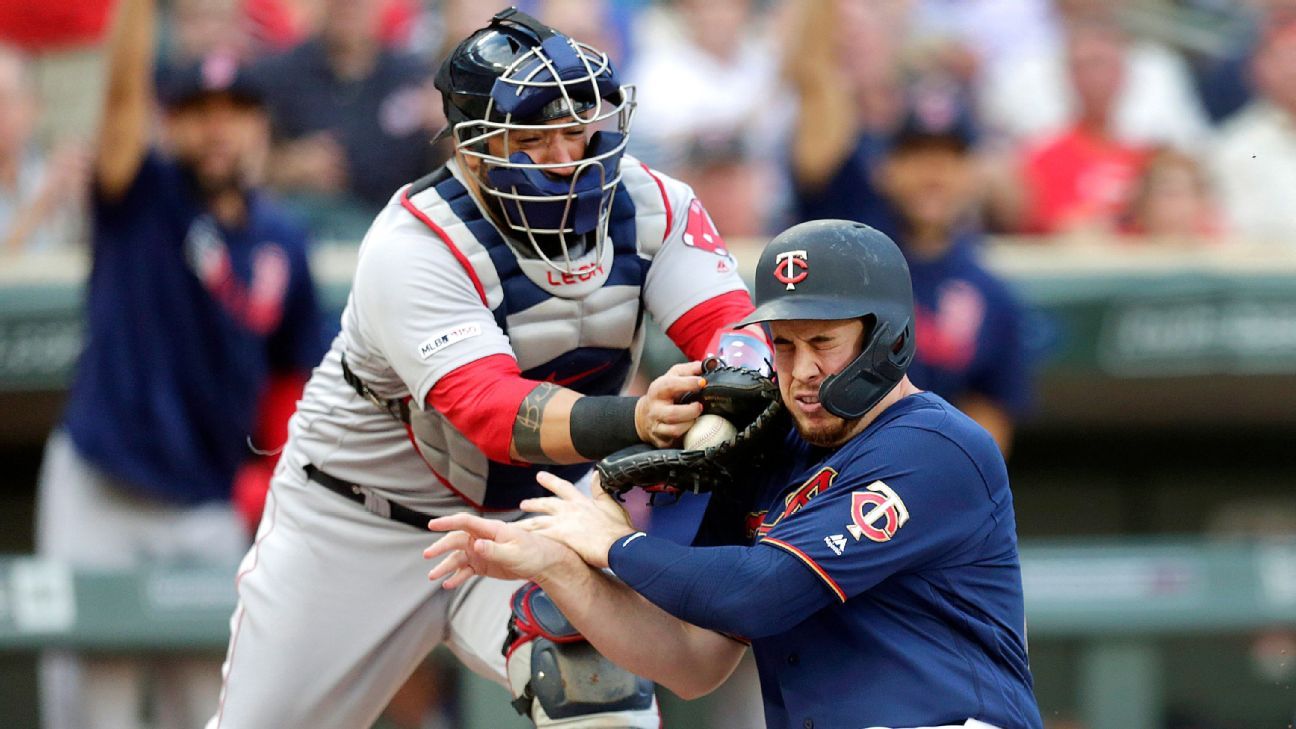
Minnesota Twins first baseman C.J. Cron has been put on the injured list with right thumb inflammation, the team announced Saturday.
Cron is hitting .266 with 17 home runs and 54 RBIs this season for the Twins, who lead the AL Central by 6 1/2 games over the Cleveland Indians entering Saturday's games.
He had two doubles, drove in two runs and scored two more in the Twins' 15-6 victory over the Texas Rangers on Friday night.
To replace Cron on the roster, the Twins recalled outfielder LaMonte Wade Jr. from Triple-A Rochester. He appeared in one game for the Twins earlier this season.
Tagged under
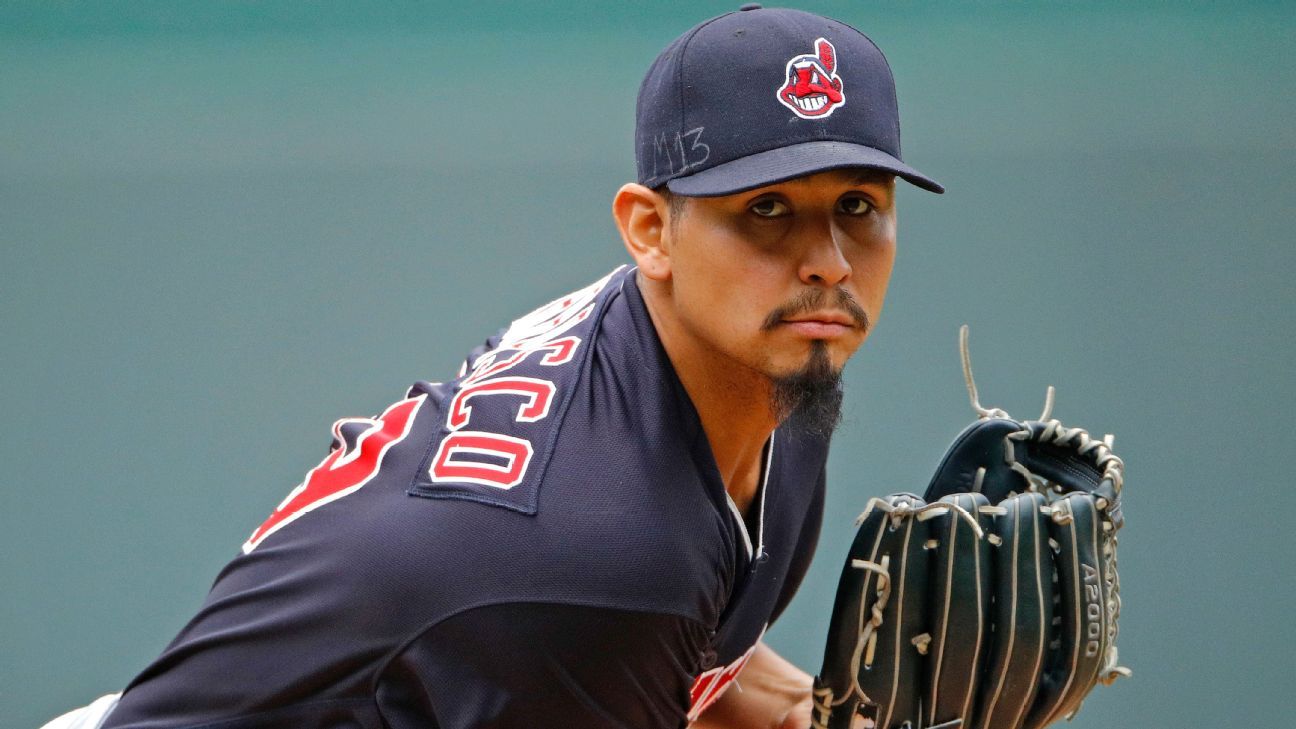
Cleveland Indians starting pitcher Carlos Carrasco says he is being treated for leukemia.
Carrasco, 32, made the revelation to a TV station while on a visit to a hospital in the Dominican Republic. He remains positive about his prognosis -- saying the condition is "under control" -- and said he'll be back with the team "at the end of July.''
Leukemia is a type of cancer that affects the blood and bone marrow. There are numerous forms of the disease, many of which are highly treatable.
Carrasco was feeling lethargic for several weeks in May and told CDN 37 that doctors "saw something different in my blood."
The right-hander said he received more tests, and he and his wife were given his diagnosis.
The Indians put Carrasco on the injured list on June 5 with an unspecified diagnosed blood disorder, saying he was "stepping away from baseball activities to explore the optimal treatment and recovery options" and that they expected him to return "at some point this season."
The Indians (48-38), who are 6 1/2 games behind the Minnesota Twins in the American League Central and are second in the wild-card standings entering Saturday's games, have not commented on Carrasco's diagnosis.
"He'll get through this with the help of everybody,'' teammate Jason Kipnis said last month. "I know the city will be very supportive of him. Every time anyone sees him they will wish him well and ask him how he's doing. I'm sure he'll still have a big smile on his face. He's always in a good mood.''
Carrasco has developed into one of the AL's steadiest pitchers in recent years. He won 17 games last season and went 18-6 in 2017, when he finished fourth in the AL Cy Young Award voting.
He was 4-6 with a 4.98 ERA in 12 starts this season prior to going on the IL.
Carrasco signed a four-year, $47 million contract in December. In 10 seasons, all with the Indians, he is 83-68 in 219 appearances (183 starts).
The Associated Press contributed to this report.
Tagged under

All roads lead to World Championships as Laura Muir heads a star-studded 1500m London line-up and Britain’s 4x100m champions get set to fine-tune their preparations
The world championships summer is hotting up and this year’s Müller Anniversary Games, in the London Stadium on July 20-21, will have a significant part to play in the preparations of a number of Britain’s top athletes.
For example, the country’s biggest endurance star, Laura Muir, will continue her Doha build-up when she goes head to head with some of the world‘s very best distance runners over 1500m in the UK capital.
The European 1500m champion and double-double European indoor champion over 1500m and 3000m will line up against a field that includes Olympic and world 1500m champion Faith Kipyegon, European 1500m silver medallist Sofia Ennaoui, 2016 world indoor 1500m silver medallist Dawit Seyaum, 2016 world indoor 1500m bronze medallist Gudaf Tsegay, European indoor 1500m bronze medallist Ciara Mageean and European indoor 3000m silver medallist Konstanze Klosterhalfen.
The British duo of Sarah McDonald, who set a big PB for 800m at the Watford BMC Grand Prix, and Jemma Reekie complete the line-up at the event which takes place 10 weeks before the starting gun is fired on the action in Qatar.
Muir has had a superb start to her outdoor season following a fantastic indoor campaign which saw her retain both her 1500m and 3000m European indoor titles on home turf in Glasgow.
The Scottish athlete won the 1500m at the Diamond League event in Stockholm in May, then clocked a season’s best 3:56.73 in Rome a few weeks ago – her second-quickest time ever – as she finished fractionally behind Genzebe Dibaba of Ethiopia. She was also second in Stanford behind Kipyegon.
“This year is a huge one for me and the race at the Müller Anniversary Games is going to be a key test ahead of the world championships at the end of the summer,” she said. “It’s a really strong field so I’m anticipating a big test with a view to producing a really strong performance.
“Winning the European outdoor title last summer and defending my European indoor titles earlier this year has given me more confidence and I’m really excited about this season. The Müller Anniversary Games is 10 weeks before Doha so the countdown clock will really start ticking there and I can’t wait to get out and race.”
Relay teams get ready to go
The Müller Anniversary Games will also host some of the biggest 4x100m relay races in the world this year.
On the men’s side, two Great Britain & Northern Ireland 4x100m quartets will line up against Australia, China, Chinese Taipei, Germany, Japan, Netherlands and Poland for an exciting showdown which is sure to set the London Stadium alight.
Great Britain’s men’s sprint relay teams have returned to top form with some exceptional performances in recent years.
In 2017 they produced an unforgettable display to win gold at the IAAF World Championships in London, and they have also won the 4x100m at the last three European Championships.
Britain’s women’s 4x100m relay athletes will also be lining up against some of the world’s best opposition at the event.
There will be two British teams taking on Germany, China, Denmark, Australia, Poland and Brazil. Competition will be strong again to secure selection for the Great Britain sprint side, which will be hoping to continue the form which saw Asha Philip, Imani Lansiquot, Bianca Williams and Dina Asher-Smith race to victory at the European Championships in Berlin’s Olympic Stadium last year.
A string of great performances in recent years, which include a 4x100m silver medal at the IAAF World Championships in London in 2017 and Olympic bronze in Rio the year before, have established this latest generation of British female sprinters as a relay team to beat on the global stage.
Tickets for British Athletics’ 2019 outdoor season are on general sale via theticketfactory.com/british-athletics
Tagged under
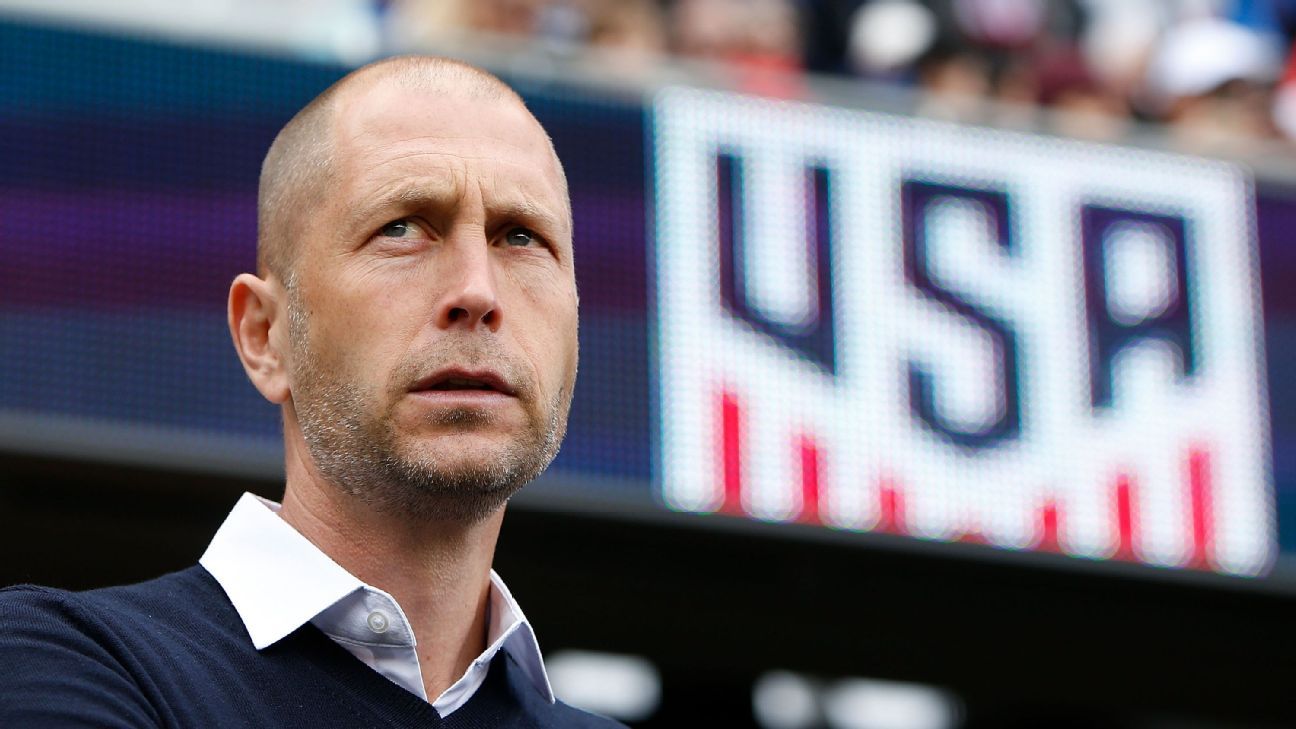
CHICAGO - U.S. men's national team manager Gregg Berhalter has said that Sunday -- which will see the U.S. contest the Women's World Cup final against Netherlands while the men face Mexico in the Gold Cup final -- should be looked upon as "Soccer Day in America."
The day will also feature the Copa America final between Brazil and Peru (stream it at 4:00 p.m. ET on ESPN+). But there have been complaints that the Women's World Cup final should have a day to call its own. Berhalter says he sees it differently.
- CONCACAF Gold Cup: All you need to know
- Full Gold Cup fixtures schedule
"This is an opportunity to be Soccer Day in America," he said. "When you think about the opportunity for the women to win the World Cup in the morning, then I think you get to party for half the afternoon. Then you get to take a little nap, and then get up, you go to the game and you enjoy the final of Gold Cup."
As for the Gold Cup itself, Berhalter believes Mexico remain the favorite, though he remains confident about his side's chances.
"When you're going into a one-off game, anything can happen," he said. "We believe in our team. We think we have a good team. Likewise, I think Mexico is a good team. I think it's going to be a good game for both teams. It's going to be a difficult game for both teams. We know how they can hurt us. We've identified how we can hurt them. Now it's just about going out and doing it."
Mexico comes into the match having played two extra time games in a row, though they will have a day more of rest heading into Sunday's final. Berhalter said he doesn't think those issues will be a factor, and that the U.S. had its difficulties to overcome as well.
"Think about all the work we did against Curacao, remember? Chasing the ball for 45 minutes, so we did our work also," he said. "We played in heat; Mexico played in air conditioning. Listen, when it comes to a final, all that stuff just doesn't matter. Take all those components, whatever you want to say; long tournament, tired, short rest, this, that, weather delay, two days' rest. All of that doesn't matter because all you want to do is get to the next game and when you get to the last game you want to win it."
With the exception of the 1-0 win over Curacao in the quarterfinals, the U.S. team has been consistent throughout the tournament. Berhalter said the team's chemistry is what has pushed the team forward over the last month.
"I like the camaraderie within the group. It's a strong group," he said. "I think they've been really focused on working together, really motivated. Overall, we've been together for a while but it's been an absolute pleasure to work with the group."
Berhalter also praised the team's leadership, which has come from a variety of players.
"I think what we're doing is we're tapping into different forms of leadership, and everybody is," he said. "So there's times when younger guys step up. But the veterans, they've been leading by example. They've been leading verbally. The whole idea of this tournament was to pick the right group of players, and have enough leaders in the group that can propel the group forward."
Tagged under
Egypt hopes Mo Salah can deliver AFCON though his hometown, Nagrig, is cheering just a little louder
Published in
Soccer
Friday, 28 June 2019 15:59
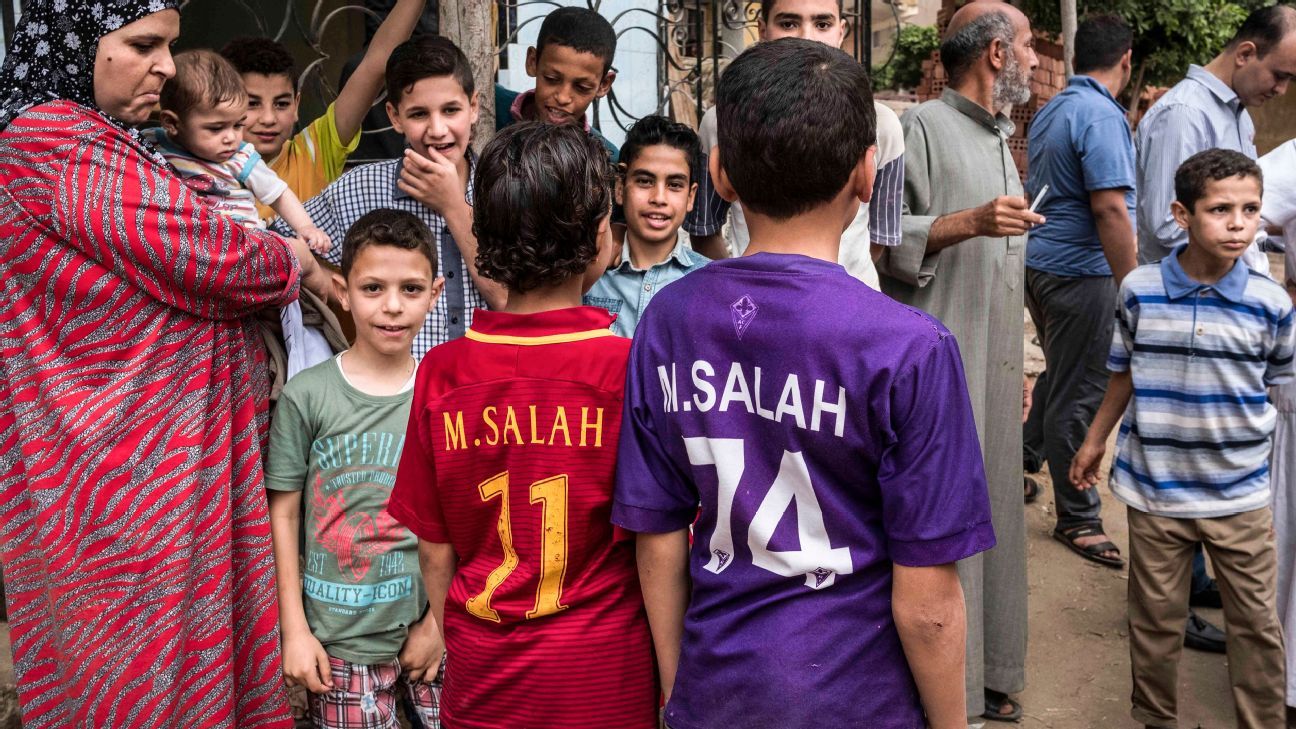
NAGRIG, Egypt -- Mrs. Amene sits on a step outside the youth centre in Nagrig. Looking over the dusty football field out front, she remembers one particular player who played there two decades ago.
"Of course I saw him play here," she says. "He was a respectable child. No matter what, I can say nothing bad about Mohamed Salah."
These days the youth centre bears Salah's name and on the side facing the pitch, there's a near-lifelike mural displaying his face and red-tracksuit-wearing upper body. Fewer than 9,000 people live in Nagrig and the journey deep into the Nile delta from Cairo, 80 miles to the south and three hours' drive in a sturdy car, is not for the faint-hearted. Yet those who attempt the trip nowadays are mounting something that feels like a pilgrimage: Nagrig is where one of the world's best footballers made his first steps and, in a country where his cult permeates every section of society, this is essentially a sacred site.
You wouldn't know it when navigating the roads, which dart between paddy fields and livestock farms while becoming steadily more treacherous while leading to this remote part of northern Egypt. People rely on agriculture to make a living here and it feels a world apart from the relentless tumult of the capital. In these parts, people must make do with simplicity. Yet Nagrig has benefited in extraordinary ways since the boy who sped up and down the rocks and gravel on that playing surface, taking the cuts and the bruises and getting up for more, took flight on his soccer journey.
- Africa Cup of Nations: Fixtures, results and all coverage
- Burundi's remarkable journey
On a Sunday afternoon in late June, Nagrig's streets are almost deserted. There is only one main thoroughfare, really; a few cafes are open to anyone who might stop, but this is nowhere anyone would end up by accident. A handful of teenagers kick a ball around and there is one easy way to break any language barrier. "Mohamed Salah!" is the best currency for any foreigner and instantly kick-starts an impromptu tour through some of the means by which he has transformed this small community.
In what passes for a square outside the town's modest medical centre, preparations are being made for a wedding. Inside are two kidney dialysis machines paid for by Salah, along with a range of other supplies he helped fund. Nearby is the site of a girls' school whose construction he has funded; a religious institute built in 2017 also owes its existence to his funds. He runs a charity, the Mohamed Salah Charity Foundation, set up with the intention of funnelling a healthy proportion of his fortune back to the place that made him.
Just around the corner, a bulky, four-story house sits empty halfway along a quiet residential street. During his youth, this was the Salah family's home base.
"He was my neighbour and his house was next to mine; I know him well," says Mrs. Amene, who works in the youth centre and watches Nagrig's next generation, many of them wearing Liverpool shirts, go through their paces. About 20 of them have gradually gathered on the pitch, more through curiosity about their new visitors than any real intention to stage a match, but Mrs. Amene has them under control: The smallest hint of what might be perceived as insolence is met with a click of the fingers and an instant straightening-up. Discipline is a cornerstone of society here and they have the perfect role model for it.
Anyone attempting the return journey to Cairo can only regard Salah's old routine with awe. The tale is well-told by now: He used to leave school at 9 a.m., after two hours' study, and then take up to five local buses so that he could train with El Mokawloon (also known as Arab Contractors), a team he joined early in his teens. It's a trip that would exhaust anyone just once, a route that runs the gantlet of Basyoun municipality's uneven tracks before the gantlet of Cairo's overwhelming traffic. Salah would do it five days a week and an anecdote told by one of his former coaches speaks of the fear that such a sapping amount of sacrifice might not pay off.
Said El Shishiny coached Salah at Under-16 and Under-17 levels, initially finding it hard to accommodate a player who was, at one stage, effectively a fifth-choice left-back.
"Many coaches will say they are the one who made him famous, but I am the one because I changed his position," El Shishiny tells ESPN FC.
"He was not one of the main players in the team so I transferred him to the right wing, because of his speed. Soon after that, we had a match against ENPPI and won 4-0. Salah had three chances to score but didn't take any of them. After the match I went to the dressing room and found him crying. I asked: 'Why are you crying?' He said: 'Because I didn't score any goals today.' I told him he would be the team's top scorer the following season and he scored 30 times in total."
Salah would never look back except to frequently turn his head toward Nagrig, where he remains a regular visitor. There is no five-star hotel here, no gated community and no exclusive suburb for the rich. He simply returns for Ramadan annually and goes home, although he complained of "disrespect" earlier this summer when a mass of local journalists and fans made it impossible for him to travel to the local mosque for Eid al-Fitr, the fast-breaking festival that signals the end of the holy month.
In a town of this size, everyone professes some kind of Salah connection. As I prepare to leave Nagrig a tall, chiselled older man extends an invitation into his home for tea. It turns out he is an uncle of Salah's by marriage, named Mustafa. "Mohammed is very kind to us here," he says. Some superstars leave their hometowns behind when the bright lights flicker into view but Salah has, in his own way, brought Nagrig along for the ride.
It means there is hope for the children, kicking up dirt under Mrs. Amene's watchful eye, of a successful and healthy life even if they do not enjoy the mind-boggling sporting success of their predecessor here.
Last Wednesday night they watched on their televisions as Salah, to a spine-tingling reaction inside a stadium that is in thrall of his every move, got his Africa Cup of Nations up and running with a superb finish against Democratic Republic of the Congo. Hours later, Salah courted controversy by publicly calling for Amr Warda, the Egypt midfielder who had been suspended from the squad for alleged sexual harassment, to be given a second chance. He got his way, and football fans were split down the middle.
With two Salah goals so far and a last-16 match against South Africa to come on Saturday, Egypt is more than capable of a deep run in this tournament. Salah holds an entire country in the palm of his hand to an extent without parallel in modern football; for Nagrig's residents, though, there is an extra sense that his success is also theirs.
Tagged under
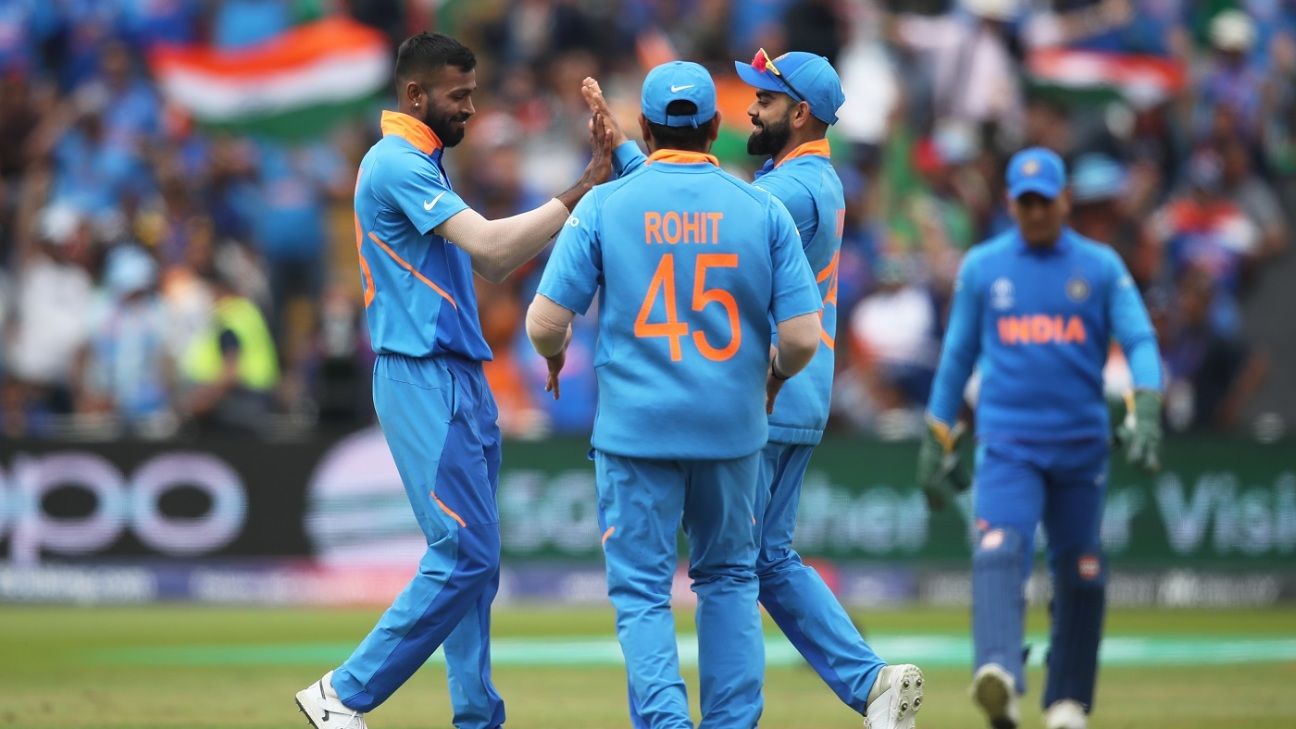
It's the last day of round-robin matches at the World Cup. Follow our updates from India v Sri Lanka at Headingley. (If the blog doesn't load for you, please refresh your page.)
Tagged under















 Phone: (800) 737. 6040
Phone: (800) 737. 6040 Fax: (800) 825 5558
Fax: (800) 825 5558 Website:
Website:  Email:
Email: 






